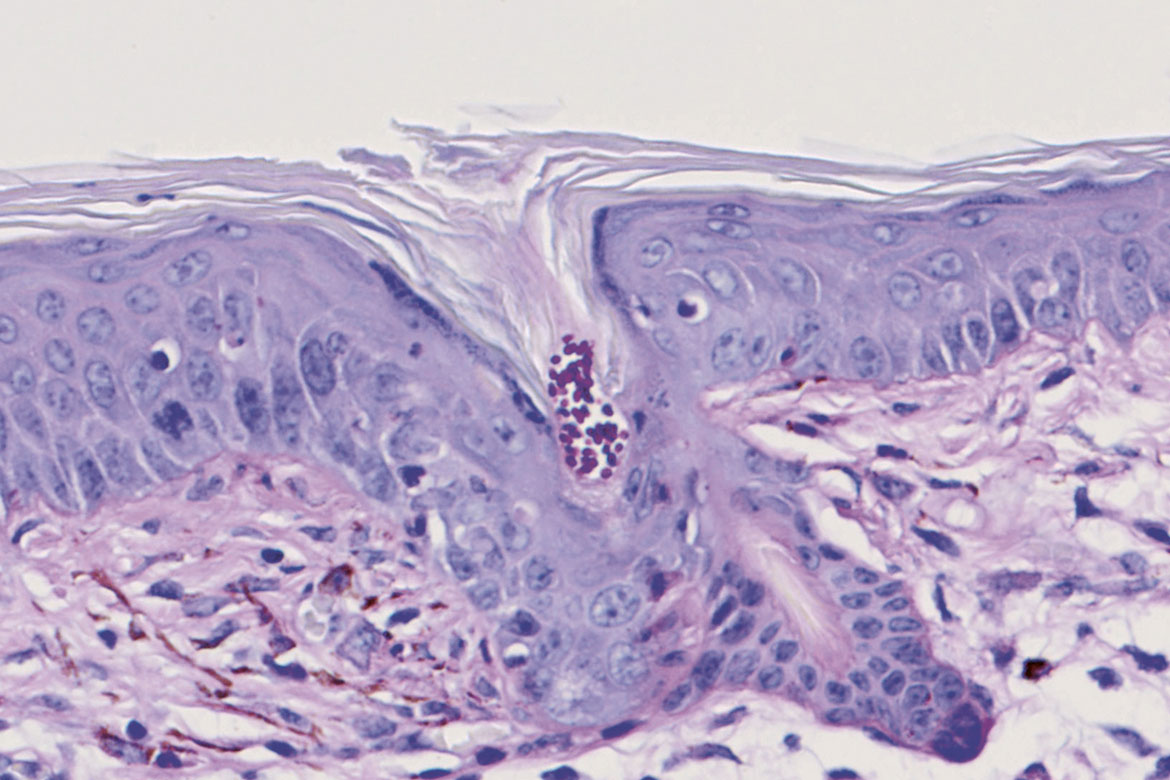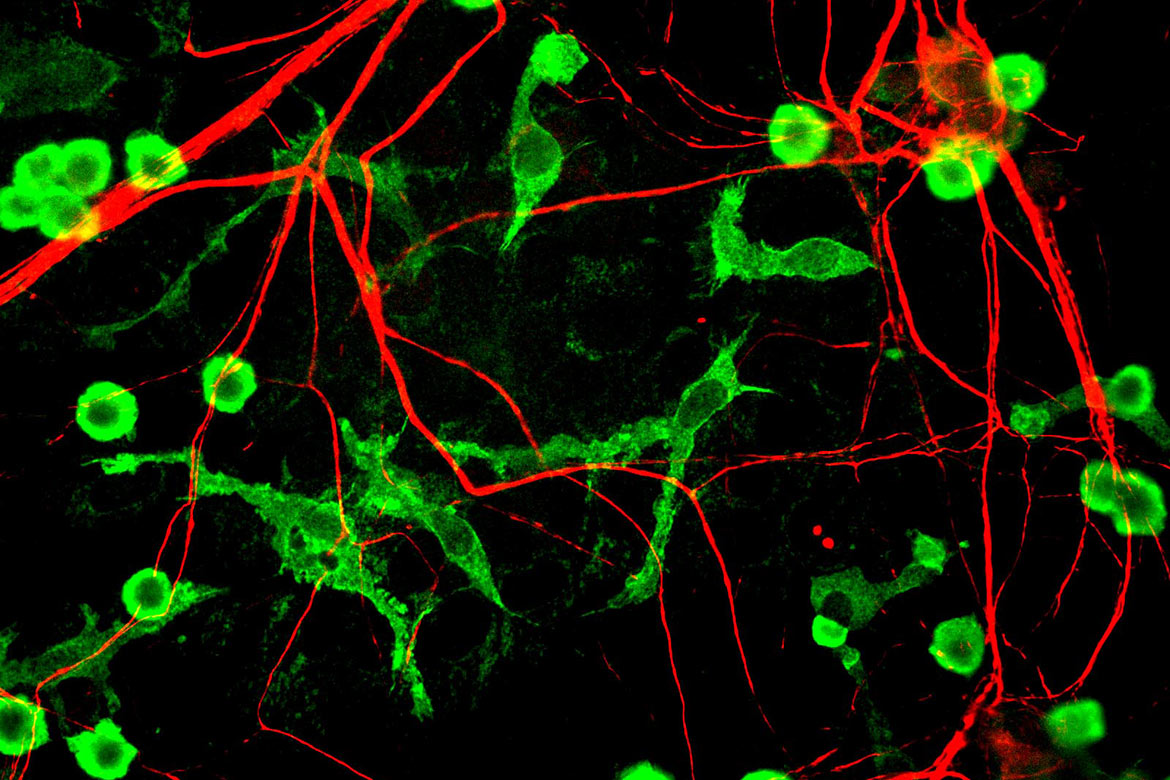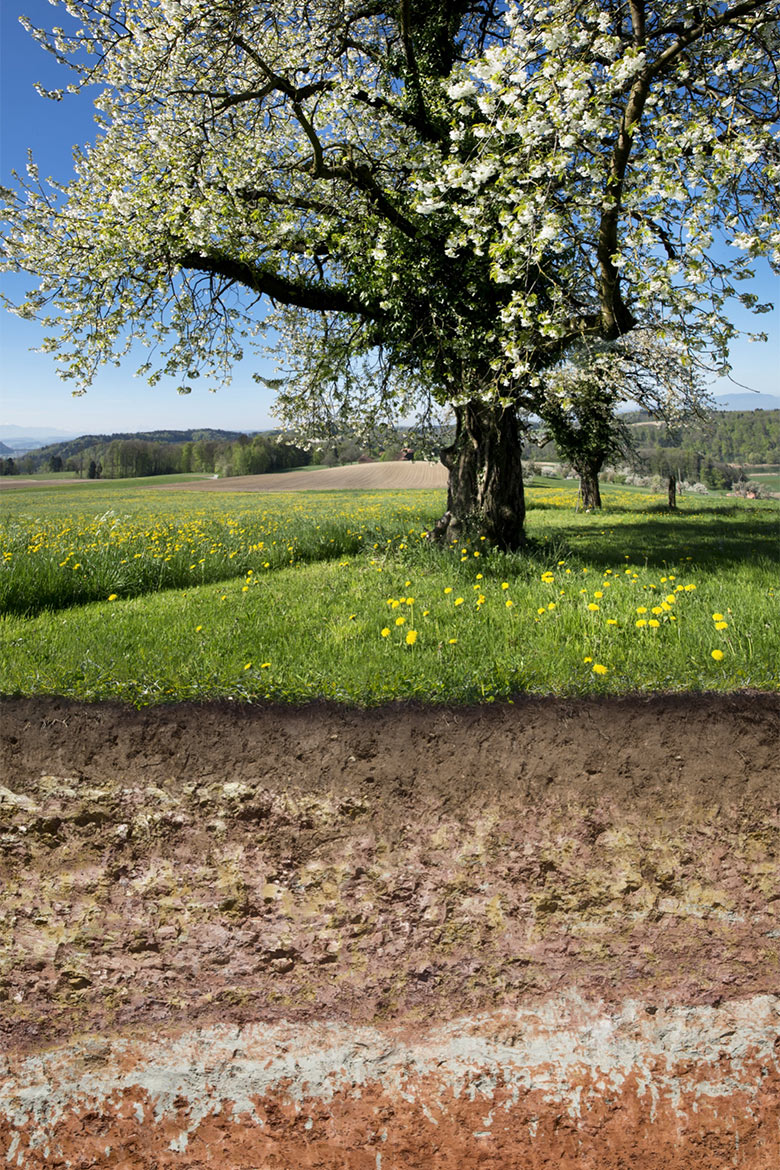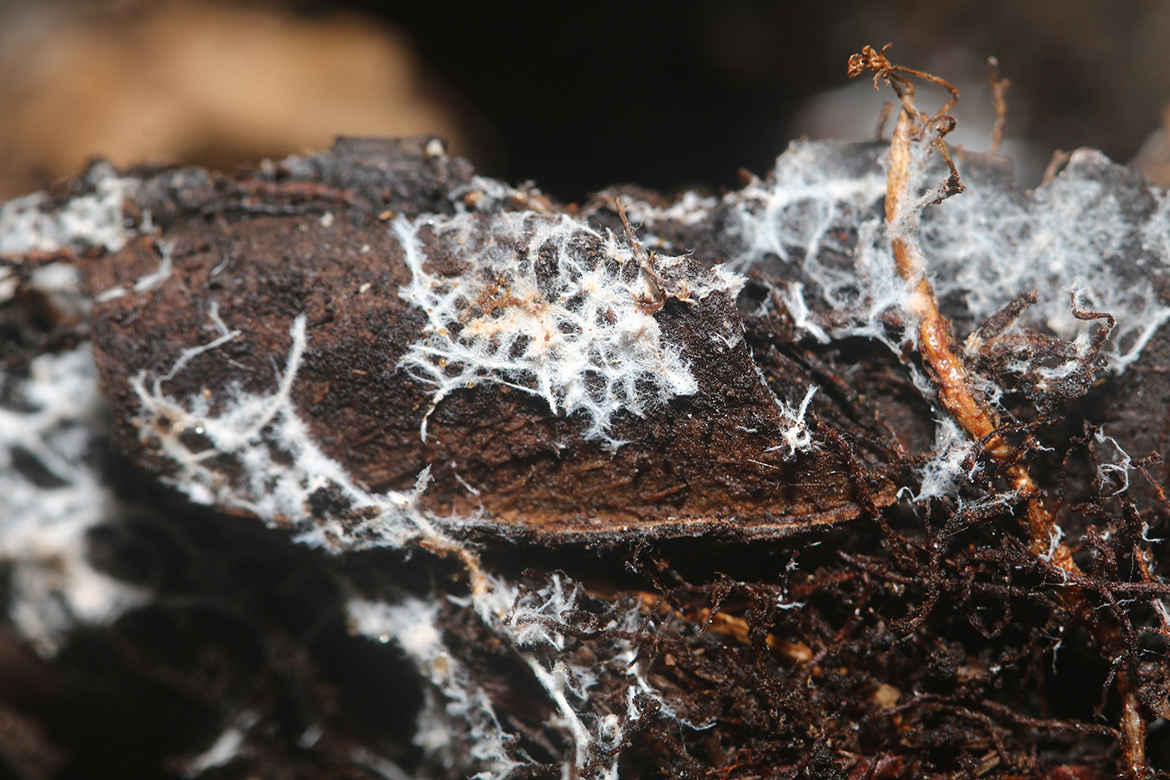Funguses the bogeymen
Our immune system usually keeps the Malassezia fungus on our skin at bay. But if the balance is tipped, skin inflammations such as neurodermatitis can occur with greater frequency.

This hair follicle contains fungus cells (dark red) that have been placed specifically on the skin of a mouse. | Picture: Fiorella Ruchti and Salomé LeibundGut-Landmann
You can’t see them with the naked eye, but they grow in their millions on the human skin: funguses, especially of the genus Malassezia. Salomé LeibundGut-Landmann, an immunologist at the Vetsuisse Faculty of the University of Zurich, has now proven that this yeast fungus triggers an immune reaction and can thus intensify the symptoms of neurodermatitis.
To prove this, she and her colleagues developed an animal model that enabled them to make the first-ever detailed investigation of the interaction between the immune system and funguses. They colonised the skin of mice ears with Malassezia, and discovered that this fungus triggered an increased secretion of the immune transmitter interleukin 17 (IL-17) in the animals. On the skin of rodents that were unable to produce any IL-17, the fungus grew uncontrollably. This confirmed suspicions that IL-17 is decisive in the balance of the fungus and the immune system response in mice, and probably also in healthy people.
But what happens if the skin is damaged, such as in patients with neurodermatitis? In order to find out, LeibundGut-Landmann made slight injuries to the skin surface of the mice ears. While this only caused a slight inflammation, a subsequent colonisation with Malassezia caused a clear exacerbation in the immune reaction. “The reaction that normally protects against the fungus then made the symptoms of illness worse”, says LeibundGut-Landmann. In future, she would like to subject this interplay between fungus, immune transmitters and neurodermatitis to further investigation, in hopes of developing long-term, effective therapies against this skin disease.




